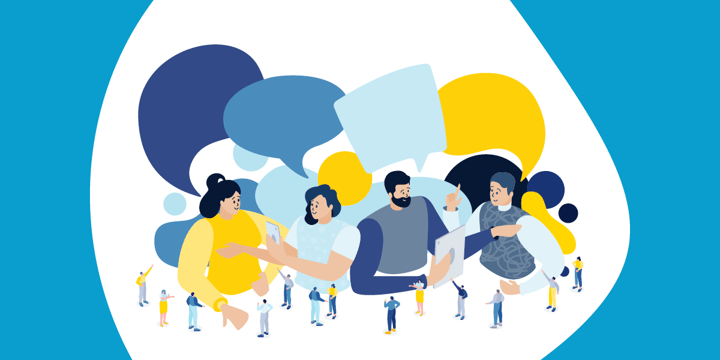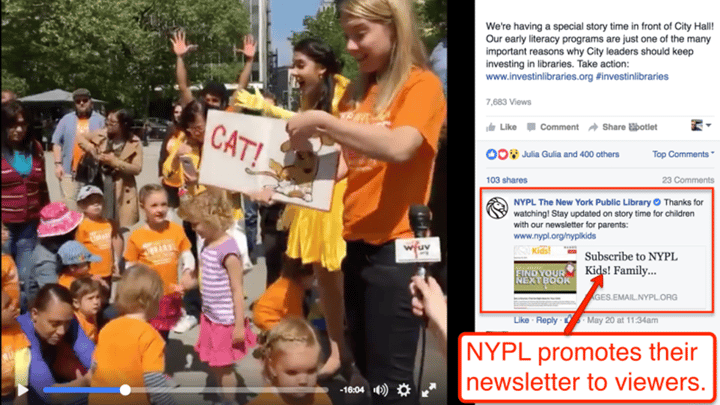An increasing number of nonprofits small and large are diving into social media each year. And though many do so successfully, some do not receive the results they expected.
I hear these social media laments from nonprofits all the time:
- "Social media algorithms have killed our engagement this year."
- "It's so hard to cut through the noise and clutter on Facebook."
- "Do you really have to spend a ton of money on ads to reach people?"
But before I provide some tactical advice on how to get more social media engagement, we need talk about algorithms. Specifically — what are they, what do they do, and why do they exist in the first place?
What Are Social Media Algorithms?

Did you ever wonder how each social network determines what to show you when you log in to the site? There are millions of status updates, photos, and videos shared to each platform every minute. And so, Facebook et al. need a way to sort this information to show you the best content that is most relevant to you.
Social media algorithms are a way of sorting posts in a user's feed based on relevancy and potential interest instead of the timing of when they were published.
All of the largest social media platforms use algorithms to prioritize which content a user sees first in their feed by the likelihood that they'll actually want to see it. Posts are not chronological anymore (and haven't been for a long time).
This is a main reason why you shouldn't worry about annoying your fans and followers by posting every day. Keep in mind the vast quantity of content being posted across the sites. Because of this, if you are posting content that is relevant, interesting, and valuable, your online community will look forward to seeing it. In addition, because of the incredibly noisy and crowded landscape on social media platforms, many of your fans will not see every single one of your posts.
Why Do Algorithms Exist?
Essentially, if you log in to Facebook, or Instagram, or Twitter, etc., and do not see posts that you find interesting or relevant, you won't spend time on the site. For this reason, these platforms use sophisticated algorithms to predict the type of content you will find interesting based on past online behavior.
Facebook has told us what kinds of content work on their platform specifically (and it's true across the spectrum). At the F8 Developer Conference, the head of Facebook's News Feed explained that the Facebook algorithm prioritizes content that is trusted, informative, and local, and that inspires conversation.
Social networks are businesses, and they want you to spend as much time on their platforms as possible. Therefore, they are extremely focused on user experience and showing their users what they are most likely to want to see.
What Can My Nonprofit Do?
There are four strategies that I recommend for nonprofits who want to win the social media algorithm battle.
1. Get Outside of Your Content Comfort Zone
I've written about this before. There's only one way to succeed in digital marketing and social media. It's to have a strategy in place to consistently post interesting, relevant, valuable content that is focused on the needs and interests of your audience.
You cannot continue to post whatever you want to post. You cannot continue to use social media like a billboard or a one-way advertising platform. You cannot post boring, poor-quality photos that don't catch the eye.
Yes, ads have a big place on the site, but your regular, daily content must be audience-focused. What does your audience want to know more about? Why do they support you? Show them the results of your work, the impact that you are creating, and tell them great stories to continue to build and deepen your relationship.
Road Scholar has done the research on its Facebook audience and found that the members of that audience are primarily female Baby Boomers or older. This audience responds to content about older people doing adventurous and unexpected activities.
2. Post More Video Content
Video is by far the most popular form of content shared on social media, on all platforms.
Check out these statistics:
- Videos on Facebook see an average of 135 percent more organic reach than images.
- Facebook users spend 3 times more time watching live videos than videos that are no longer live.
- Users also comment more than 10 times more during live videos.
Livestream (a professional video streaming service) surveyed customers and discovered that
- 80 percent of respondents said they would rather tune in to a live video than read a blog post.
- 82 percent of respondents were more interested in watching live video from a brand than reading social media posts.
Thankfully, there are many free and low-cost tools that nonprofits can use to create, edit, and share more video on social media channels.
Videos like this one shared by the Greater Boston Food Bank tend to perform very well when uploaded directly to social media platforms, rather than sharing a link to the video:
Live video is the best-performing type of video content across the platforms. The New York Public Library frequently goes live from its many public events, and then asks followers to connect by subscribing to its email updates:

3. Experiment with Paid Social Media Ads
Although free content remains effective on social media, nonprofits need to begin experimenting with paid ads to get even more reach and exposure for certain posts.
More than 1 billion daily active users share 4.75 billion pieces of content every day on the social network. So launching a Facebook Ad campaign can set you apart and help you reach a targeted audience.
You can boost posts or tweets you've already created to give them added exposure. Or you can execute standalone advertising campaigns around a specific call to action, such as donating on Giving Tuesday.
4. Stop Automating Your Posts
Each social media platform is completely unique, with specific best practices, pros, cons, strengths, and weaknesses. Automating all of your content across platforms doesn't work anymore (not that it worked well even just a few years ago). Beyond character counts and optimal image sizes, each social media platform has its own culture, etiquette, language, and structure.
You can certainly schedule a few tweets here and there using different language and images each time. But continuing to use HootSuite or Buffer to automatically populate your social media feeds will cut your reach and decimate potential engagement.
Creating a concrete strategy to increase social media engagement is the first step in getting real results from the platforms. What is your biggest struggle in getting social media engagement?
Want to learn more social media skills, including how to create an effective social media marketing plan? Register for Social Media Marketing 301 — Fall 2019 Cohort today. It's a unique blended learning opportunity (live instruction plus self-driven modules) that will include live interactive events, videos, worksheets, practical activities, and more.
Or, get the four-course bundle for $150.










